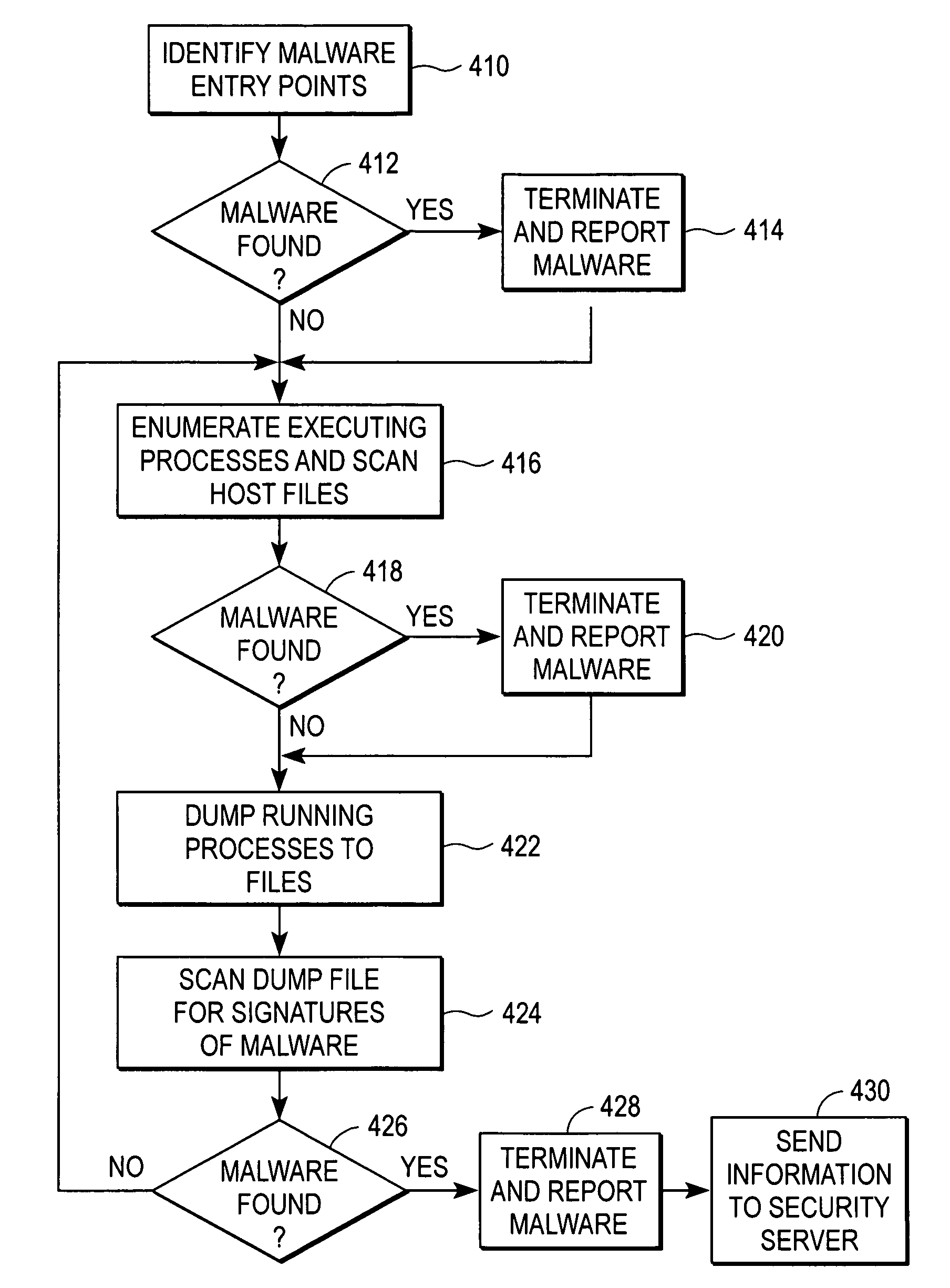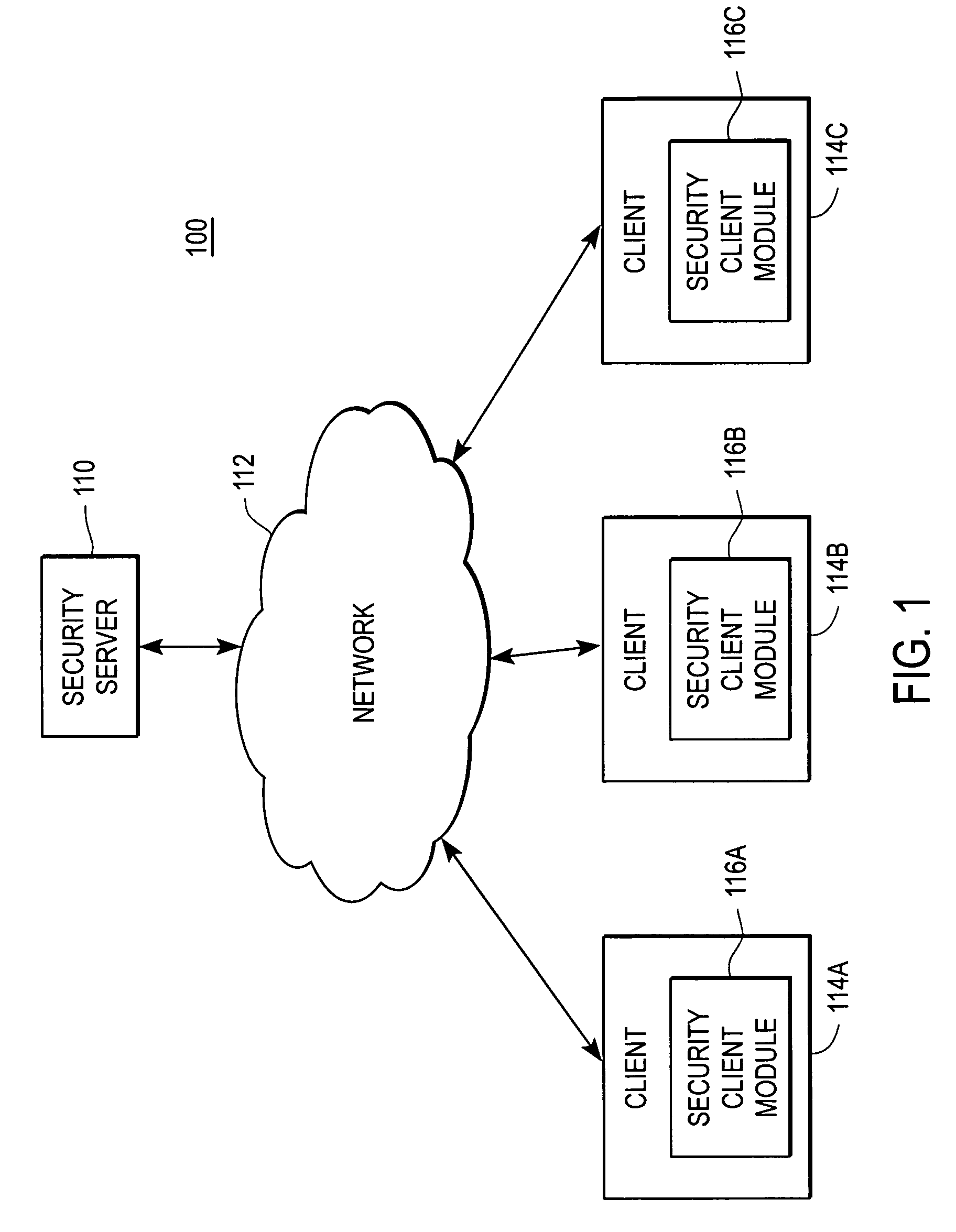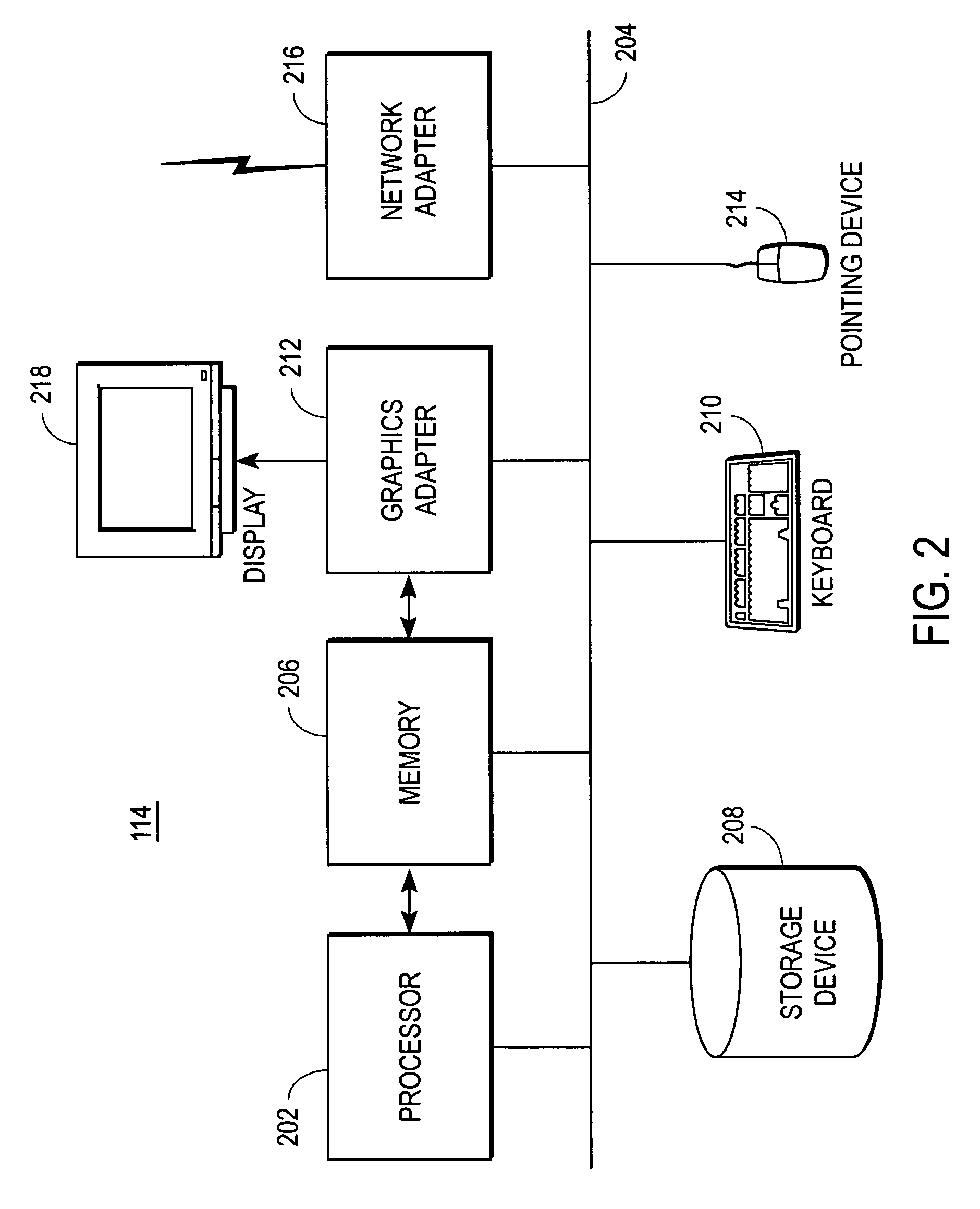Detecting malicious software through process dump scanning
a malicious software and process dump technology, applied in the field of computer security, can solve the problems of not always working on packed software, emulation, and scanning techniques that work well on unpacked malicious software, and achieve the effect of defeating emulation, and preventing malicious software from being detected and scanned
- Summary
- Abstract
- Description
- Claims
- Application Information
AI Technical Summary
Benefits of technology
Problems solved by technology
Method used
Image
Examples
Embodiment Construction
[0015]FIG. 1 is a high-level block diagram of a computing environment 100 according to one embodiment of the present invention. FIG. 1 illustrates a security server 110 connected to a network 112. The network 112 is also connected to multiple client computers 114. FIG. 1 and the other figures use like reference numerals to identify like elements. A letter after a reference numeral, such as “114A,” indicates that the text refers specifically to the element having that particular reference numeral. A reference numeral in the text without a following letter, such as “114,” refers to any or all of the elements in the figures bearing that reference numeral (e.g. “114” in the text refers to reference numerals “114A,”“114B,” and / or “114C” in the figures).
[0016]The network 112 provides communications between and among the other entities illustrated in the computing environment 100 of FIG. 1. In one embodiment, the network 112 is the Internet and uses wired and / or wireless links. The network...
PUM
 Login to View More
Login to View More Abstract
Description
Claims
Application Information
 Login to View More
Login to View More - R&D
- Intellectual Property
- Life Sciences
- Materials
- Tech Scout
- Unparalleled Data Quality
- Higher Quality Content
- 60% Fewer Hallucinations
Browse by: Latest US Patents, China's latest patents, Technical Efficacy Thesaurus, Application Domain, Technology Topic, Popular Technical Reports.
© 2025 PatSnap. All rights reserved.Legal|Privacy policy|Modern Slavery Act Transparency Statement|Sitemap|About US| Contact US: help@patsnap.com



